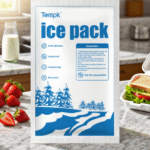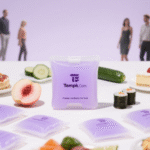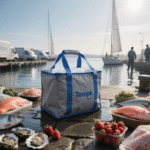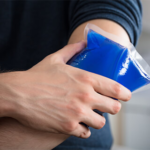Dry Ice Packing Sign: 2025 Compliance Guide (UN1845)
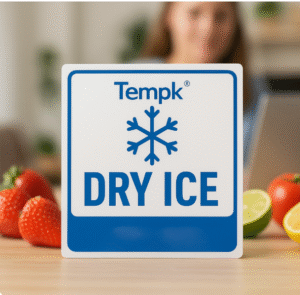
-
What is a dry‑ice packing sign?
-
Mandatory elements (air shipments)
-
Sign placement & sizing rules
-
Mode-by-mode differences: air, ground, USPS
-
Safety icons & warnings to add
-
2‑minute sign template (copy–paste)
-
10‑point acceptance checklist (2025)
-
FAQs
What is a dry‑ice packing sign?
A dry‑ice packing sign (a.k.a. shipping label set for UN1845) is the visible set of marks and labels that tells carriers and inspectors exactly what’s inside, how much dry ice (CO₂, solid) is present, and how to handle it safely. It also proves your package vents CO₂ gas (never airtight), which is both a safety and legal requirement.
Mandatory elements (air)
Your sign and marks must include:
-
UN number & Proper Shipping Name: Mark “UN1845” and “Carbon dioxide, solid” (or “Dry ice”) on the package.
-
Net weight of dry ice in kilograms (per package): Write the actual kg of dry ice; if using an overpack, also show the total kg on the overpack.
-
Quantity limit: ≤ 200 kg dry ice per package by air under IATA PI 954 (applies to passenger & cargo aircraft). Operators may impose stricter limits.
-
Class 9 hazard label (100×100 mm): Affix the Class 9 diamond (7 stripes), minimum 100 mm, and do not write inside the diamond.
-
Label & mark on the same surface: Place the Class 9 label on the same face as the Proper Shipping Name/UN mark, close together.
-
Shipper/Consignee names & addresses: Durable, legible, unobscured.
On the air waybill (when a Shipper’s Declaration isn’t required): include UN1845, the words “Carbon dioxide, solid” or “Dry ice”, number of packages, and net weight in kg in the Nature & Quantity box.
Sign placement & sizing rules
-
Class 9 diamond size: minimum 100×100 mm; attach securely (strong tag acceptable).
-
Same‑surface rule: Keep the Class 9 label near the Proper Shipping Name/UN mark on the same package face (don’t split across sides).
-
UN number character height (non‑bulk, U.S. ground): at least 12 mm high (6 mm allowed on very small packages per HMR exceptions).
-
No labels on the bottom; make packages large enough for all marks/labels without overlaps.
Mode‑by‑mode differences (what your sign needs) <a id=”modes”></a>
Air (IATA DGR 66th, 2025)
-
Vent the package to release gas; mark UN1845, Proper Shipping Name, net kg, Class 9, addresses; ≤200 kg dry ice per package; overpack totals shown.
Ground (U.S. HMR, domestic)
-
If dry ice is used only as a refrigerant for non‑dangerous goods, HMR Column 6 = “None” for UN1845, so no Class 9 label is required; you still need proper marks and durable, contrasting UN/Name.
USPS (U.S. mail)
-
Air mail: ≤ 5 lb (≈2.27 kg) dry ice per mailpiece; mark UN1845 and contents; Class 9 label required.
-
Surface mail: may exceed 5 lb; no Class 9 label; mark “Surface Only” plus UN1845 and contents.
Passengers vs. cargo (don’t confuse them!)
-
Passengers may carry up to 2.5 kg (5.5 lb) of dry ice in checked/carry‑on baggage with venting and marks—this is not the limit for cargo shipments.
Carrier policies (UPS/FedEx)
-
UPS international dry‑ice shipments often require a signed International Special Commodities (ISC) agreement; always check operator variations.
-
FedEx acceptance follows PI 954 and IATA marking/label placement rules; use their 2025 DG checklist.
Safety icons & warnings to add
Enhance your sign set with small, universally understood icons (not a substitute for required hazard labels):
-
Frostbite risk (−78.5 °C): glove/eye protection icons.
-
CO₂ asphyxiation risk: note that sublimation can rapidly release large volumes of CO₂ (approx. 1 lb → 250 L), so ventilation is critical; include a “Do not seal airtight” warning.
-
Reference workplace exposure limits (OSHA/NIOSH: TWA 5,000 ppm, STEL 30,000 ppm) in your SOPs (not on the label).
2‑minute sign template
Place this block on one face of the package; affix the Class 9 diamond (100 mm) adjacent on the same surface. Replace brackets with your data.
-
Then add the Class 9 hazard label (100×100 mm), ensuring you do not write inside the diamond.
-
Make sure the package is vented to release CO₂ gas (no airtight containers).
10‑point acceptance checklist (2025)
-
Package is sound, vented; no leaks/odor/damage.
-
UN1845 and Proper Shipping Name are marked.
-
Net weight (kg) marked on each package; overpack total (kg) shown if applicable.
-
Class 9 label (100 mm) affixed and on the same surface as the Proper Shipping Name.
-
Shipper & Consignee names/addresses are present and unobscured.
-
≤ 200 kg of dry ice per package (air).
-
Air waybill shows UN1845, name, number of packages, and net kg.
-
USPS: follow ≤5 lb rule by air; surface mail rules differ.
-
U.S. ground: labels not required under HMR for UN1845 used as refrigerant; marks must meet HMR size/contrast.
-
Operator/state variations checked (e.g., UPS ISC, FedEx policies).
FAQs
Q1. What must be on a dry‑ice packing sign?
A: UN1845, “Carbon dioxide, solid”/“Dry ice”, net kg of dry ice, Class 9 (100 mm) on the same surface, shipper/consignee, and overpack totals if used. IATA
Q2. What’s the max dry ice per package by air?
A: 200 kg per package under IATA PI 954; carriers may set lower limits. IATA
Q3. Do I need the Class 9 label for U.S. ground shipments?
A: When dry ice is used solely as a refrigerant for non‑hazardous contents, HMR shows no label required (Column 6 = “None”). Markings still apply.
Q4. How do USPS rules differ?
A: Air: ≤ 5 lb per piece, Class 9 label required; Surface: may exceed 5 lb, no Class 9 label, mark “Surface Only.”
Q5. Is the 2.5 kg limit real?
A: Yes—but for passengers’ baggage (not cargo). Passenger baggage limit is 2.5 kg with venting and marks.
Q6. Any wording I should avoid on the diamond?
A: Never write inside the Class 9 diamond; place all text outside the border.
Q7. What about safety icons?
A: Add frostbite/ventilation icons as supplemental info; they don’t replace required IATA/HMR marks.

















